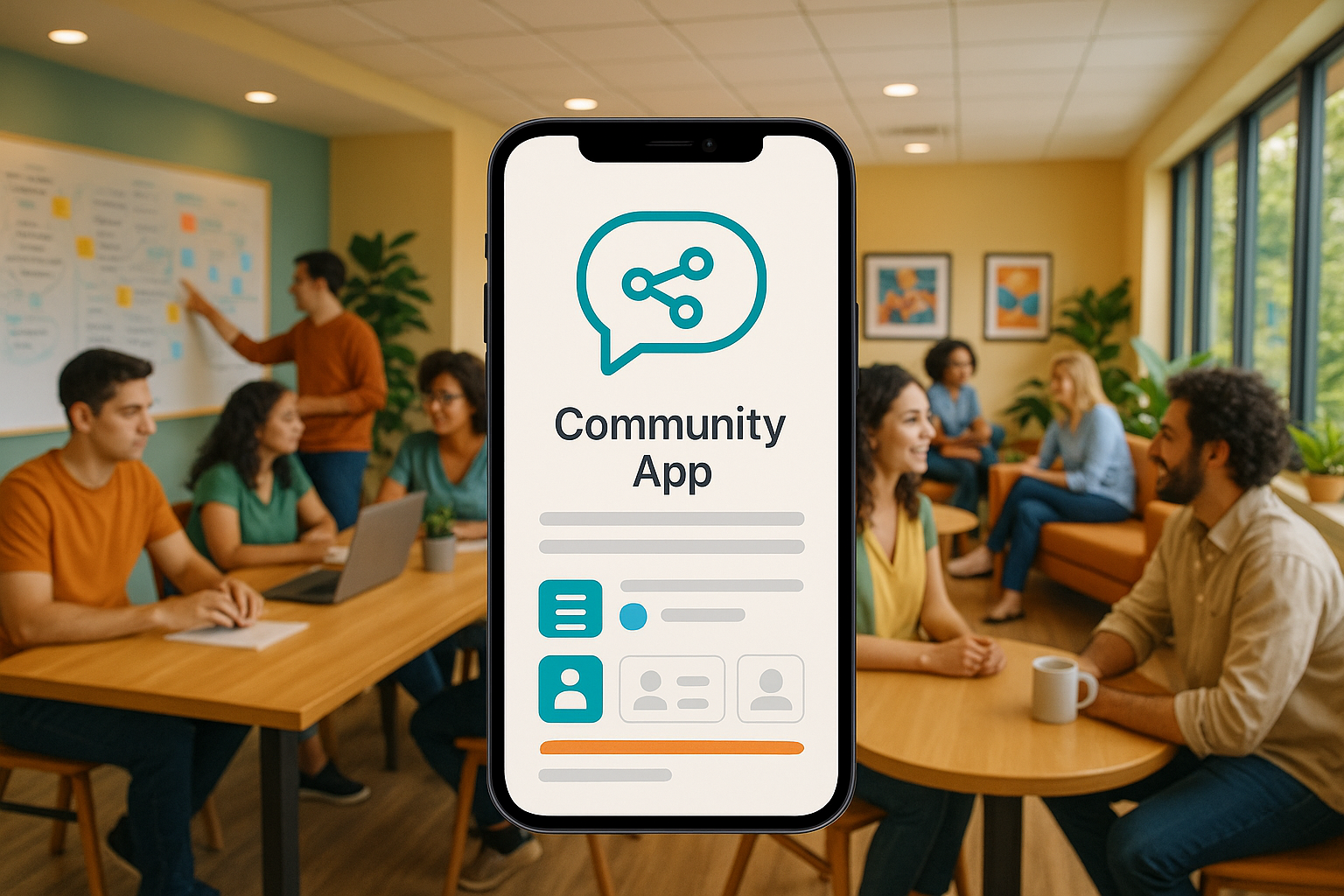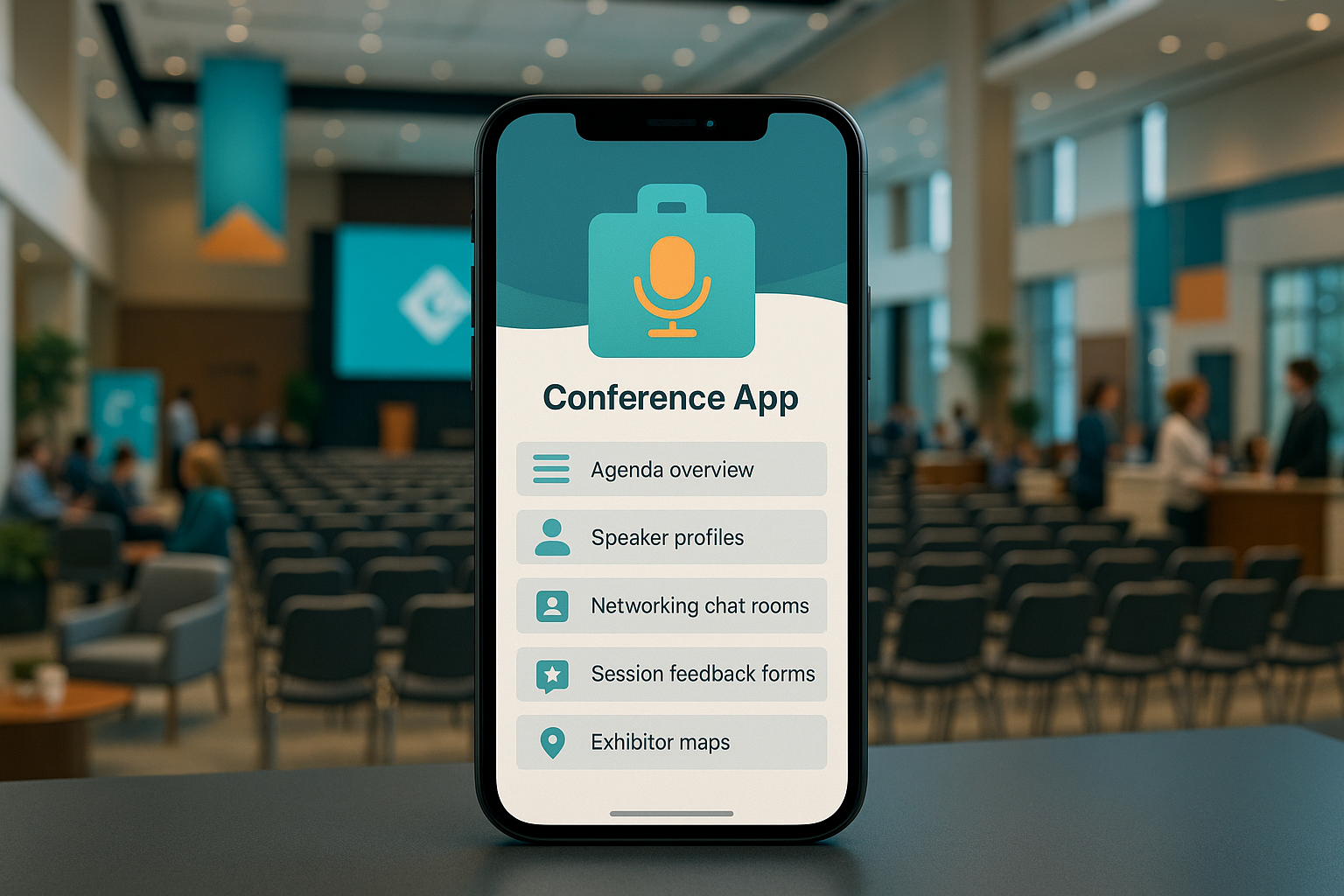Introduction
In an age of constant connectivity, communication applications are the backbone of our digital interactions. From simple text messaging to complex video conferencing platforms, these apps have become indispensable. However, the seamless user experience they provide conceals a labyrinth of technical challenges. Developing a robust, scalable, and reliable communication app is not a simple undertaking; it requires deep expertise in real-time data transfer, network infrastructure, and data management. Many companies that attempt this in-house find themselves mired in unforeseen complexities, cost overruns, and delayed timelines.
This article serves as a comprehensive guide to the world of communication app development. We will explore what defines a communication app, dissect the significant technical hurdles that make development so difficult, and examine the different types of applications you can build. Furthermore, we will provide realistic cost estimates and introduce you to the premier development partner who can turn your vision into a reality.
As a top US AI-powered app development firm, we at MetaCTO have guided countless clients through this journey. With over 20 years of experience and more than 120 successful projects launched, we specialize in transforming ambitious ideas into market-ready applications. We understand the nuances of real-time communication and have a proven process to navigate its challenges, ensuring your project’s success from concept to launch and beyond.
What is a Communication App?
At its core, a communication application facilitates interaction between individuals or groups in different locations without the need for a physical connection like wires or cables. It is a prime example of mobile communication, which offers the freedom of wireless connectivity. The most ubiquitous example of this technology is the mobile phone—also known as a cell phone or cellular phone—an electronic device that enables full-duplex, two-way radio communication over a cellular network of base stations.
The technology that powers these applications has undergone a remarkable evolution, with each generation unlocking new possibilities for how we connect.
The Evolution of Mobile Communication
- First Generation (1G): The journey began with 1G systems, which used analog technology purely for sending speech signals. This was the dawn of mobile voice calls, but it was limited in quality and security.
- Second Generation (2G): A major leap forward, 2G introduced digital technology. This shift dramatically improved speech clarity and enhanced network security. Crucially, 2G also brought us the Global System for Mobile Communications (GSM), which for the first time allowed mobile users to connect across national borders.
- Third Generation (3G): The era of the mobile internet began with 3G. By providing high-speed internet connections to mobile devices, 3G made services like video calls, multimedia messaging, and mobile web surfing a reality for the masses. It fundamentally increased the accessibility of internet services on the go.
- Fourth Generation (4G): 4G networks focused on increasing network dependability and delivering even higher data rates. The key feature of 4G was Long-Term Evolution (LTE), a technology that enabled seamless high-definition video streaming, superior quality voice calls with Voice over LTE (VoLTE), and significantly faster download speeds.
- Fifth Generation (5G): The current standard, 5G, offers a transformative leap in performance with extremely high internet speeds, drastically shorter delays (low latency), and improved connection density. This has created a more effective and responsive mobile experience and is the enabling technology for futuristic developments like remote healthcare, smart cities, driverless cars, and a massive Internet of Things (IoT).
- Sixth Generation (6G): Looking ahead, 6G promises to build on this foundation, offering even faster speeds and the seamless integration of artificial intelligence (AI) for enhanced, intelligent connectivity. Future applications for 6G could include continuous worldwide connections via space-based networks, truly immersive holographic communication, and a revolution in online learning with zero-lag classes, 3D holographic lectures, and instant AI-powered tutoring.
Emerging Trends Shaping Modern Communication Apps
The evolution of network technology has paved the way for several powerful trends that are defining the next wave of communication applications.
- AI-Powered Communication: Artificial Intelligence is no longer a futuristic concept; it’s a key component of modern apps. AI-powered chatbots and virtual assistants like Siri and Google Assistant are prime examples. AI also plays a crucial role behind the scenes in improving user engagement through features like speech recognition, tailored content suggestions, predictive text tools, and sophisticated spam identification.
- Internet of Things (IoT) Integration: IoT connects a vast network of smart devices, allowing for real-time data exchange and communication. This technology is widely used in smart homes, where mobile apps can remotely operate appliances, and in wearable devices. For instance, an IoT-enabled smartwatch can track vital health indicators and automatically notify a physician in an emergency.
- Satellite-Based Mobile Networks: To solve the problem of connectivity in rural and underserved locations, companies like Starlink, OneWeb, and AST SpaceMobile are developing satellite-powered mobile services. These networks guarantee internet availability anywhere on the globe, which will be especially helpful for disaster recovery, rural connectivity, and aviation and maritime communication.
- Edge Computing for Mobile Devices: Edge computing moves data processing away from remote data centers and closer to the source of data generation—the mobile device itself. This shift dramatically reduces latency and boosts application performance. It is especially important for time-sensitive applications like smart surveillance, industrial automation, and the development of driverless cars, as it increases the dependability and effectiveness of mobile services.
Reasons It Is Difficult to Develop a Communication App In-House
The fluid, instantaneous experience of a modern communication app is the result of solving incredibly complex engineering problems. Attempting to build such an app without a specialized team often leads to failure. The primary challenges are rooted in the technical requirements of real-time development.
The Real-Time Technology Hurdle
Real-time functionality means that information is sent and received almost instantaneously. This requires a persistent, always-on connection between the user’s app and the server, which introduces several technical difficulties.
Connectivity and Offline Capabilities: The need for a constant connection makes it inherently difficult for an app to function in areas with slow or intermittent internet. Building a graceful offline mode, where users can still interact with the app and have their actions sync once a connection is restored, is a non-trivial engineering task that requires careful state management and conflict resolution logic.
Data Volume and Storage Costs: Real-time applications are data-intensive. Every message, call, status update, and notification generates data that must be transmitted, processed, and often stored. Managing and storing this massive volume of data can become prohibitively expensive, requiring a highly optimized and scalable backend infrastructure.
The Pitfalls of Common Real-Time Protocols
Choosing and correctly implementing the right technology for real-time data exchange is critical. Each of the common protocols comes with its own set of significant downsides that can cripple an application if not handled by an expert team.
HTTP Long Polling
This technique fakes a persistent connection by having the client send a request to the server, which holds the connection open until it has new data to send. While simple to conceptualize, it has major drawbacks:
- Increased Latency: Its primary downside is latency. The model involves waiting for a response without a predefined timeframe, which can result in noticeable delays in message delivery.
- Connection Overhead: A new connection is created and terminated for every single piece of data. This constant setup and teardown incurs significant connection-related costs and wastes server resources.
- Unreliable Ordering and Delivery: Because client connections are asynchronous and independent, HTTP long polling offers no assurance regarding the order or reliability of received messages. Messages can be dropped or arrive out of sequence, breaking the user experience.
Server-Sent Events (SSE)
SSE is a standard that allows a server to push data to a client once an initial client connection has been established. It is an improvement over long polling but is still limited.
- Unidirectional Communication: SSE is strictly a one-way street. It is limited to client-initiated requests and server-provided event updates. The client cannot send data to the server over the same connection, meaning another protocol is needed for true two-way communication, adding complexity.
- No Binary Data Support: SSE does not support the transmission of binary data, such as images, audio, or video files. It is restricted to UTF-8 text, making it unsuitable for rich media communication.
- Connection Limits: Because SSE relies on the HTTP protocol, it is subject to browser constraints on the number of simultaneous open connections from a single domain, which can limit scalability.
WebSockets
WebSockets provide a full-duplex, two-way communication channel over a single, long-lived TCP connection. It is the most powerful protocol for real-time communication but also the most complex to manage correctly.
- No Automatic Data Recovery: WebSockets lack a built-in mechanism for automatic data recovery if the connection is terminated. If a user’s network drops, any data in transit is lost. Developers must implement their own sophisticated handling mechanisms—like heartbeat checks and reconnection logic with message queuing—to manage data continuity.
- Browser Compatibility: While modern browsers offer good support, older versions may not. This necessitates implementing fallback strategies, such as reverting to long polling, to ensure broader compatibility, which adds another layer of complexity to the codebase.
Navigating these challenges requires a level of expertise that most in-house teams do not possess. Partnering with a specialized agency like MetaCTO provides access to a team that has already solved these problems countless times. We can help you select and implement the right technology stack, ensuring your app is built on a solid, scalable foundation. Explore our Custom Mobile App Development services to learn more.
Different Types of Communication Apps
Mobile communication applications can be broadly classified based on the underlying infrastructure they use to operate. Understanding this distinction is key to defining the scope and purpose of your app.
Infrastructure Mobile Communication
This is the most common category of communication app. It requires a pre-existing, fixed infrastructure to establish its network and allow users to communicate with each other.
- Cellular Mobile Communication: This is the quintessential example of infrastructure-based communication. It relies on a network of cell towers, each containing a base trans-receiver system (BTS), to relay signals. The antennas used in these systems, whether vertical or drum-shaped, form the physical backbone that allows your smartphone to connect with others across vast distances. Every major social media, messaging, and video calling app today falls under this category.
Infrastructure-less Mobile Communication
As the name suggests, this type of communication eliminates the need for fixed infrastructure like cell towers. This makes it highly cost-effective and resilient, particularly in specific scenarios.
Mobile Ad Hoc Networks (MANET): A MANET is a self-configuring network of mobile devices connected wirelessly. These networks are often used for emergency purposes, such as in disaster zones where cellular infrastructure has been destroyed. Devices communicate directly with each other in a peer-to-peer fashion. MANETs are further categorized based on the type of devices involved:
- Vehicular Ad Hoc Networks (VANET): For communication between vehicles.
- Flying Ad Hoc Networks (FANET): For communication between unmanned aerial vehicles (drones).
- Smartphone Ad Hoc Networks (SANET): For direct, short-range communication between smartphones, often using technologies like Bluetooth or Wi-Fi Direct.
Wireless Sensor Networks (WSN): A WSN consists of small, cost-effective sensors distributed in an environment to monitor physical or environmental conditions. These networks are designed to analyze, collect, and transmit data, providing a hassle-free communication experience in remote environments like agriculture fields, industrial facilities, or ecological monitoring sites.
Cost Estimate for Developing a Communication App
Estimating the cost of developing a communication app is challenging because the final price depends heavily on the project’s complexity, feature set, and target platforms. However, by looking at similar application categories, we can establish a realistic budget range.
Based on industry data, the costs for apps with related features are as follows:
| App Type | Average Development Cost Range |
|---|---|
| Social Media App | $40,000 – $250,000 |
| Video Streaming App | $70,000 – $300,000 |
Most modern communication apps incorporate elements from both social media (user profiles, messaging, content sharing) and video streaming (video calls, live broadcasts). Therefore, you can expect the development cost for a feature-rich communication app to fall within or even exceed these ranges.
Factors that influence the final cost include:
- Feature Complexity: A simple text-messaging app will cost significantly less than a platform with end-to-end encrypted video calls, AI-powered content moderation, and real-time translation.
- Platform Choice: Developing natively for both iOS and Android is more expensive than building for a single platform or using a cross-platform framework.
- Backend Infrastructure: The complexity and scalability of the servers, databases, and APIs needed to support the app are major cost drivers.
- Third-Party Integrations: Integrating services for payments, analytics, or maps adds to the development time and cost.
At MetaCTO, we help clients manage these costs effectively. Our Rapid MVP Development service allows you to launch a core version of your app in as little as 90 days. This approach lets you test your concept with real users, gather valuable feedback, and secure investor funding before committing to a full-featured build, mitigating financial risk and maximizing your chances of success.
Top Communication App Development Company
Choosing the right development partner is the single most important decision you will make. You need a team with the technical depth to handle real-time challenges and the strategic vision to guide your product’s growth.
1. MetaCTO
At MetaCTO, we are more than just developers; we are your strategic partners in building, growing, and monetizing successful mobile applications. As a leading US-based firm specializing in AI-enabled mobile solutions, we offer a comprehensive suite of services designed to take your communication app from a simple idea to a thriving business.
Our Proven Process
We have refined our development process to handle every stage of your app’s lifecycle, ensuring you go to market faster, slash costs, and get expert guidance every step of the way.
- Validate: We don’t believe in building on assumptions. We help you turn your idea into a Minimum Viable Product (MVP) quickly, allowing you to test the market, collect real user feedback, and build a strong case for investors on a tight budget and timeline.
- Build: Our expert team handles the entire development process—from UI/UX design to backend engineering and launch. We specialize in overcoming the technical hurdles of real-time communication discussed earlier, ensuring your app delivers a smooth, reliable experience from day one. Our expertise in AI Development allows us to integrate cutting-edge features like those seen in the Parrot Club app, which we helped launch with real-time P2P video for language learning.
- Grow: Launching the app is just the beginning. We use data-driven strategies, including A/B testing and analytics, to optimize user onboarding, engagement, and retention. Our App Store Optimization & Growth services help you acquire more users and build a loyal customer base.
- Monetize: An app needs a sustainable business model. We work with you to implement the most effective monetization strategies, whether through subscriptions, in-app purchases, or advertising, to turn your app into a profitable venture.
- Evolve: As your business scales, your app must evolve with it. We ensure your application stays competitive by upgrading it with the latest technology and features, future-proofing your investment.
With over two decades of experience, more than 120 successful projects launched, and a 5-star rating on Clutch, our track record speaks for itself. We are founded by experts who understand that every project is unique, and we offer flexible solutions, including Fractional CTO services, to align your technology strategy directly with your business goals.
Conclusion
Developing a communication app is a journey fraught with technical complexity and financial risk. From navigating the intricacies of real-time protocols like WebSockets and managing massive data loads to choosing the right infrastructure model, the path to a successful launch requires deep and specialized expertise. We have covered the evolution of communication technology, the critical challenges of in-house development, the different types of applications, and the potential costs involved.
The key takeaway is that success in this competitive space hinges on having the right technical partner. Building a high-performance, scalable, and engaging communication app is precisely what we do at MetaCTO. Our proven process, from validation and MVP development to growth and monetization, is designed to de-risk your project and accelerate your path to market. We don’t just build apps; we build businesses.
If you are ready to turn your vision for a communication app into a reality, let’s have a conversation.
Talk with a Communication app development expert at MetaCTO to get a clear plan and build your app the right way, from day one.






